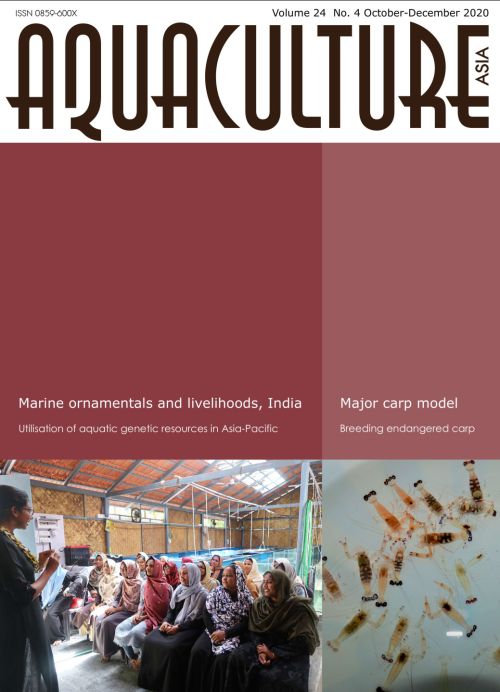Aquaculture Asia Magazine, October-December 2020
31 December 2020 | 16797 views | .pdf | 8.61 MB | Freshwater finfish, Gender, Genetics and Biodiversity, Hatchery and nursery, India, Livelihoods, gender and social issues, Marine finfish, Ornamentals

In this issue:
- Framework for participatory linkage of marine ornamentals germplasm conservation to livelihoods: Is community aquaculture an inclusive option?
T.T. Ajith Kumar, R. Charan, Teena Jayakumar, L.K. Tyagi, N. Saravanane, Vindhya Mohindra, T. Jaffer Hisham and Kuldeep K. Lal - Induced breeding of farm-bred and pond-raised critically endangered peninsular carp, Hypselobarbus pulchellus
Gangadhar B., Raghavendra, C.H., Ananda Kumar B.S. and Hemaprasanth - A way forward for utilisation of aquatic genetic resources in Asia-Pacific: Synthesis from deliberations during the Regional Workshop on Underutilized Fish and Marine Genetic Resources and their Amelioration 2019
Kuldeep K. Lal, Rishi Tyagi, J.K. Jena and Simon Wilkinson - Cast nets: The dominant active fishing gear in the Kashmir Valley
Naila M. Bhat, Rida Riyaz, Ifrah Rashid, Ahali Jahan, Afief Tariq Shah, and Parvaiz Ahmad Ganie - Moyna model of major carp farming in Purba Medinipur District, West Bengal, India
Subrato Ghosh - NACA Newsletter
Creative Commons Attribution.





